
Meet the bioengineers
🧫 What is bioengineering? 💪
Bioengineering is a multidisciplinary engineering subject where many of its applications aim to solve biological and healthcare challenges. Its challenges can incorporate a biological, chemical, mathematical, or engineering approach; and its scale ranges from cells to medical devices.
What is the focus of your role?
Alex, Senior Manager, West Pharmaceutical Services:
I am a Senior Manager in Research and Technology in the R&D team at West Pharmaceutical Services in Exton, Pennsylvania, USA. West manufacture over 45 billion components for the drug containment and delivery industry. These support injectable medicines, to make sure drugs are safely and correctly delivered into patients. My role is specifically intent on exploring new research that could impact the future of drug packaging and delivery. To do this I collaborate with universities and startup companies and work with them to develop their technology so that one day it may be able to help patients.
Cai, CEO, Multus:
I am the CEO of the start-up company Multus, which I co-founded in 2019. Multus is developing the key ingredient, the growth media, to produce cultivated meat (meat produced in a lab from animal stem cells) affordably and profitably. This will facilitate more sustainable solutions for meat production, especially as we only grow the meat people eat: the muscle and fats cells and the connective tissue, reducing waste.
Ciara, PhD student in neuroengineering:
I am a PhD student working in the field of neuroengineering and I am interested in augmentation, which is having the ability to control something which is not part of your body, for example, mind-controlled prosthetics. I work in the area of motor control and I study how our nervous system behaves and how this translates into the body moving. I am researching how we can use this knowledge to control something external to our body.
To answer this question, I use maths and coding to develop software and algorithms (a set of instructions a computer follows to solve a problem) to understand how the motor neurons behave. I also design my own experiments to understand how the body moves, which uses biological and mechanical engineering knowledge.
Ravinash, Assistant Professor, Imperial College:
I work at Imperial College London as a group leader. Our group has two focuses, one is using 3D printing to build new microbiome models of the gut, so we can understand which micro-organisms live in our gut, their function and how different micro-organisms live together. If you have an accurate model of the gut, you can study pathogen (an organism that causes disease) invasion and start researching questions such as how to treat diseases.
The second part is looking at designing 3D printed soft robots that can be put into the body, so they can deliver more targeted medicines and treatments.
How does your work impact society?
Alex:
My work is highly focused on efficacy and safety, as all our products will be used directly or indirectly on a patient. We must ensure that all drugs, even after long term storage, remain sterile and suitable to be injected. We also need to ensure that any new materials and manufacturing methods dare not a source of contamination. Safety is critical with injectable medicine as we are using routes of administration where we are bypassing the skin. For instance, in the case of an intravenous drug delivered into a vein, the contents of that syringe can pass through the bloodstream and into the brain within 15 seconds.
Cai:
Multus is developing an affordable, more sustainable way to produce meat. Our technology aims to meet the increasing demand for meat, and displace some of the harmful manufacturing processes such as battery farming. Our technology can reduce the amount of farmland required for meat production and reduce the need for industrial animal feed, which will help protect rainforests, farmland and biodiversity.
Antibiotics are also used in animal feeds and the World Health Organisation predict that antibiotic resistance could potentially lead to more deaths than cancer by 2050; the cultivated meat industry can tackle this challenge.
Ciara:
The applications of my research could have a huge impact on healthcare. Future prosthetics could have improved functionality by being integrated into the user’s body and controlled by the user, as if it was a biological limb (whereas current prosthetics do not have this level of control). Moreover, some surgeries require the use of radiation, and the surgeons are exposed to high doses of radiation through multiple surgeries. If the surgeon could operate with a robotic arm, which they control from a different room, they could operate with a fine degree of control but without being unnecessarily exposed to the radiation.
A non-clinical application is in the gaming industry – augmentation could be used to generate a more immersive experience, where we use our body and nervous system more directly to control virtual objects in the game (rather than through an interface like a controller or keyboard).
Ravinash:
By producing 3D printed models, we can start to avoid using animal models and produce more reproducible experiments. 3D printed models are more controllable as you can print a set number of cells in a precisely constructed environment. Also, the experiment can be visualised in real time, which is currently not possible with an animal model.
Being a group leader means I can help progress the next generation of scientists and support them on their career journeys to achieve great things.
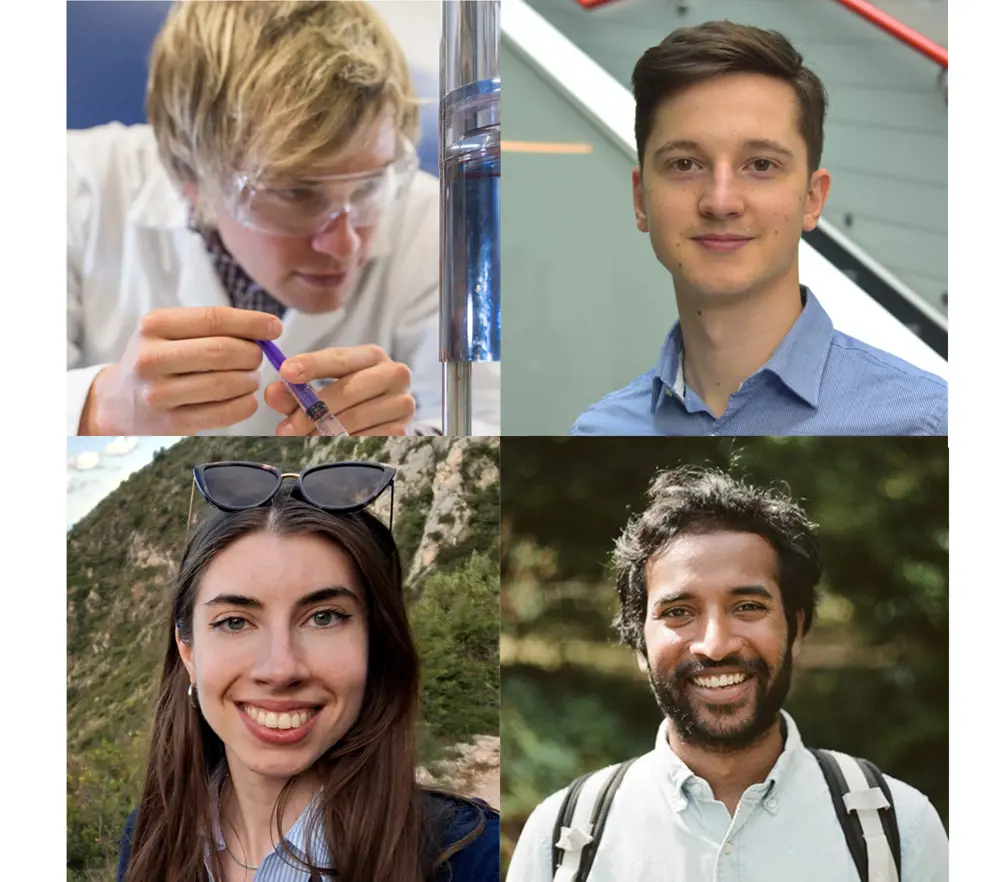
What does a typical day look like for you?
Alex:
As many engineers will say, every day is different! Part of my role is scouting for new technology. I do a lot of research to understand what the latest scientific trends are through attending conferences, reading scientific publications, patents applications that have been field and establishing pipelines of pharma companies. When working in this field it is important to network well and to speak to a diversity of people across the industry and from different disciplines to understand the required specifications for new drugs that are in development.
Cai:
As a CEO of a start-up, I wear many different hats. I have a commercially focused role where I speak to customers, investors and different partners who support our scale up and manufacturing. I am involved in our product development, so I meet with our scientists to consider experimental design, and how we could improve our products. I am also involved in hiring, strategy and budgeting. I do a lot of things because we are a smaller team. It is nice as you learn a lot of new skills outside of my technical training and I get to meet a lot of new people from around the world.
Ciara:
Each day is varied and different. I lead the research but I am not working alone, I often collaborate with other researchers. I am responsible for designing the experiments, generating and discussing the main research questions, building the experimental set ups and learning new skills. I have taught myself new programming languages for my PhD; there is a lot of independent learning. Organisation and time management is required.
Ravinash:
I lead a small team of researchers from MSc to PhD students, to postdoctoral research associates. It is great working towards research goals and it is amazing as there are so many different aspects to my role. For the research aspect, I meet with the team to discuss results, troubleshooting and the direction of the research. I am responsible for getting grant money to keep the group funded. I teach and deliver lectures and tutorials to undergraduate and postgraduate students. I am an administrator to ensure we keep the group running by ordering the chemicals and equipment, and making sure everything is safe. There are wider department administrative roles where I organise seminars, collaborative meetings and can contribute to equality, diversity and inclusion within our department. I wear many hats; this makes it challenging but very fun and interesting.
What is your favourite aspect of bioengineering?
Alex:
By far it is the problems I get to work on and the people I get to do that with. I started out as a mechanical engineer and I work daily with chemists, physicists, pharmacists, clinicians and commercial teams to create design specifications then develop prototypes of a product. There is real satisfaction knowing some of my ideas have got as far as being prototyped, patent protected, tested, verified, approved and ready to be used in the clinic to help those patients that need it.
Cai:
The interdisciplinary nature working with incredible scientists, engineers and people outside of these fields; bringing so many people together to create a new solution to a biological challenge is incredible.
Ciara:
That it is a broad subject, I love learning new skills which are applied to the healthcare sector, which is very rewarding. You can also collaborate with a lot of people, at some point in my PhD I am hoping to work with patients and learn from their lived experiences. It is very special having that interaction with the people who could use your product.
Ravinash:
Being able to tackle a problem from a multidisciplinary approach, so you can use and grow your own expertise and combine the knowledge of many collaborators. Often questions cannot be answered by just one set of expertise; this is what I really like about engineering.
***
Note: Alex completed this interview in February 2024 and has since started a new role at TTP plc. He is still working in the same field and is a Business Development Director for Drug Delivery.
Contributors
Fern is a MEng bioengineering graduate from Loughborough University. She received an Engineering Leaders Scholarship in 2022 from the Royal Academy of Engineering and is a STEM Ambassador. Her goal is to promote the diversity of career possibilities in engineering.
Keep up-to-date with Ingenia for free
SubscribeRelated content
Food & agriculture
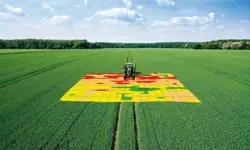
Precision farming
Technologies such as global positioning systems and guided vehicles are being developed to create an era of precision farming. Professor Richard Godwin FREng explains how these initiatives can combine accuracy and control of field operations leading to increased efficiency and yields.
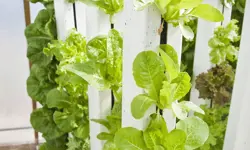
Farming straight up
Hydroponics, growing plants without soil in nutrient-enriched water, is a technique that has been used in some form for centuries. As the global population grows and food security is threatened, its faster growth and larger yields have become increasingly important.
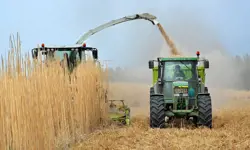
What role for biofuels in low-carbon UK transport?
Biofuels have a role to play in meeting the UK’s climate change commitments. Sustainable Chemical Engineering Professor Adisa Azapagic FREng sets out why biofuels made from wastes and by-products in different sectors are particularly important to these efforts.
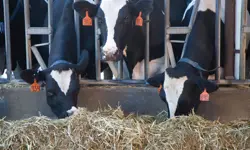
The automation of dairy farms
Robotic milking is not a new innovation, but the systems are increasingly being adopted by UK dairy farms. Science writer and broadcaster Geoff Watts learned from John Baines, Technical Director at Fullwood, how these systems are being engineered to do more than just milk cows.
Other content from Ingenia
Quick read

- Environment & sustainability
- Opinion
A young engineer’s perspective on the good, the bad and the ugly of COP27

- Environment & sustainability
- Issue 95
How do we pay for net zero technologies?
Quick read

- Transport
- Mechanical
- How I got here
Electrifying trains and STEMAZING outreach

- Civil & structural
- Environment & sustainability
- Issue 95